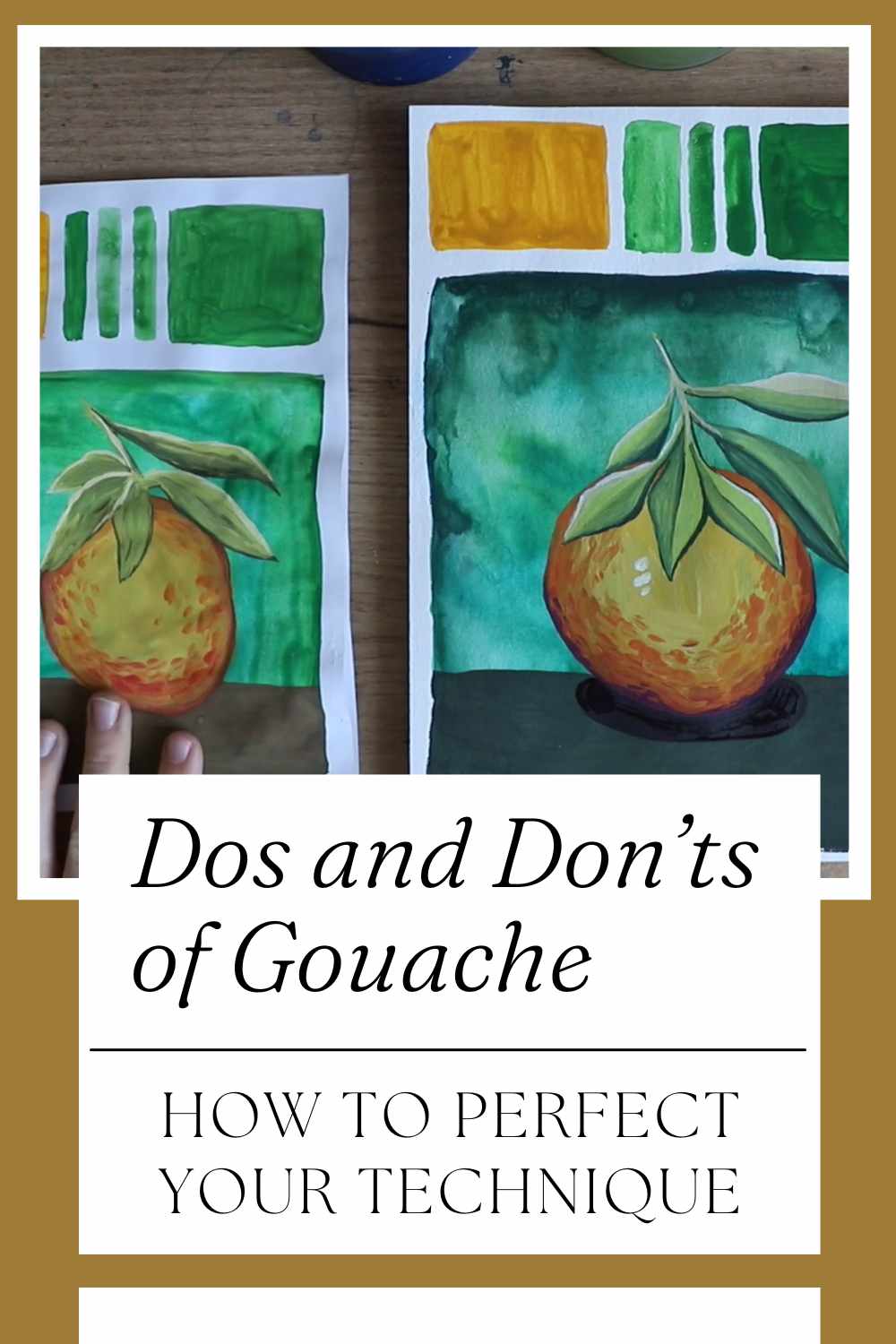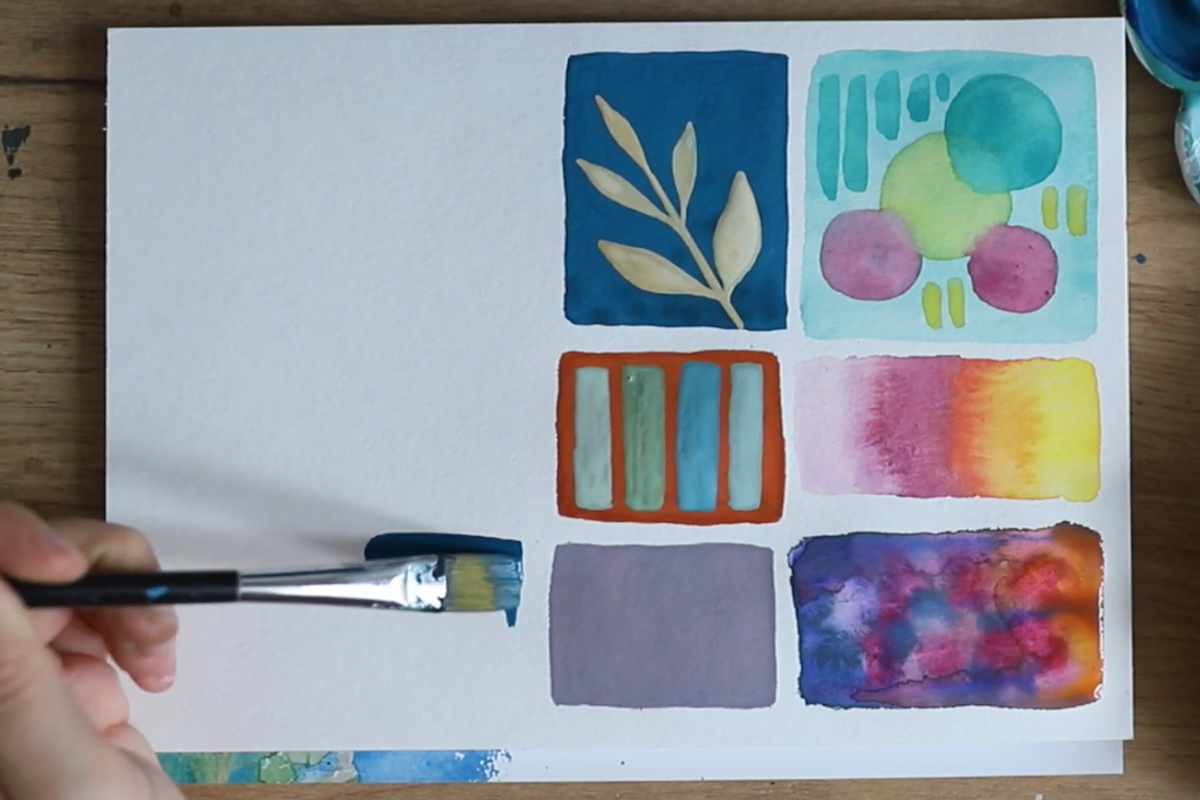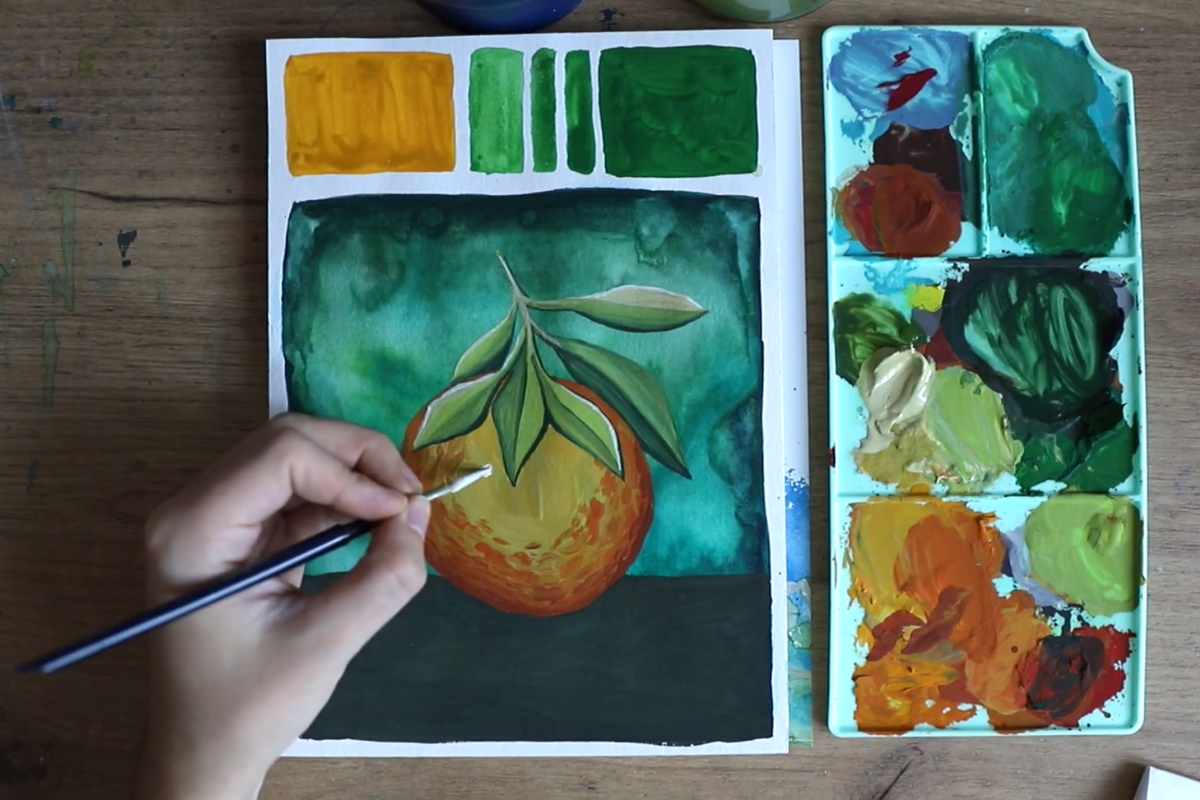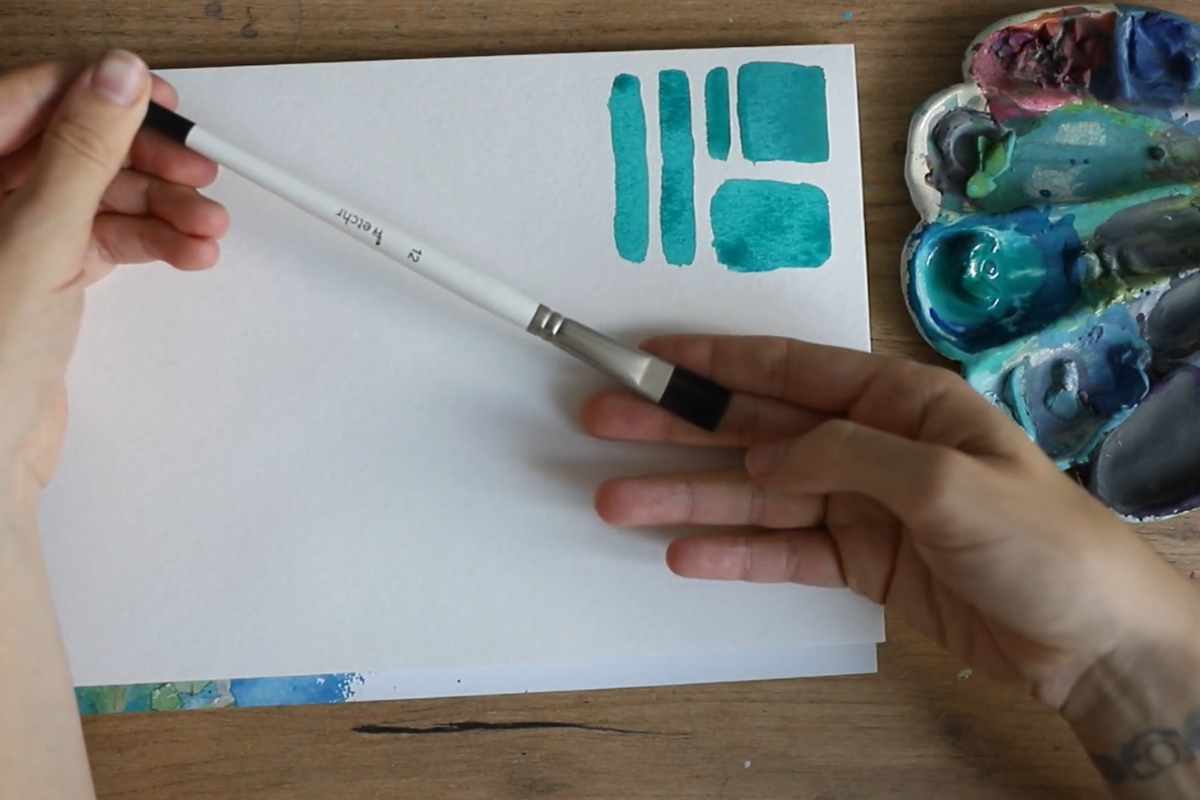Dos and Don’ts of Gouache: How to Perfect Your Technique

Gouache is a unique and vibrant medium that many artists love for its rich colors and versatility. However, mastering gouache can be tricky, especially for beginners.
If you’re new to gouache or looking to refine your skills, avoiding common mistakes can be the key to improving your work. In this guide, we’ll cover the dos and don'ts for working with gouache, helping you create smoother, more polished pieces while learning from the common pitfalls.
DO: Experiment with Water Control
One of the defining features of gouache is its ability to be adapted to water. It can be used both thickly for opaque coverage or thinned down for a more transparent effect. Understanding how to control water in your gouache will give you much more flexibility in your artwork.
When you want a smooth, solid color, use less water. This helps achieve a thick, opaque layer that is characteristic of gouache.
If you’re aiming for a lighter, more transparent wash, add water to the paint. This creates a more watercolor-like effect, but without losing the vibrancy of gouache.
Experimenting with water levels will help you better understand how to use gouache for different effects and styles.
DON’T: Overload Your Brush with Paint
One mistake beginners often make is using too much paint on the brush. While it might feel tempting to load your brush for a fuller color, this can cause blotchy or uneven coverage. Gouache is best applied in layers, so it's crucial to work with small amounts of paint at a time.
Using too much paint can lead to streaks and uneven texture, making it hard to achieve smooth coverage.
It can also result in the paint drying with an unwanted shine or glossiness, which doesn’t match the typical matte finish gouache is known for.
For the best results, apply thin layers and build up the paint gradually. This technique will not only give you more control over the outcome but also improve the overall quality of your work.
DO: Use Gouache on the Right Paper
Another important tip is choosing the right paper for gouache painting. Since gouache is water-based, it works best on watercolor paper or thick mixed-media paper that can absorb the paint without buckling.
Using thinner paper can cause the paint to seep through and create an uneven texture.
If you’re painting larger works, opt for cold-pressed watercolor paper. Its texture will add depth to your gouache, helping you create vibrant layers.
If you’re using gouache on standard sketching paper, you may notice that it doesn’t hold up well to water and will cause the paper to warp or tear.
Choosing the proper paper allows the paint to settle and blend smoothly without any unwanted interference.
DON’T: Skip Proper Layering Techniques
Gouache can be a tricky medium when it comes to layering. It dries relatively quickly, but when you don’t let each layer dry fully before applying the next, you may end up mixing colors unintentionally, leading to muddy results. This is a common mistake that even experienced artists can make.
Always let each layer fully dry before applying the next. This ensures that the colors remain vibrant and that the layers don’t mix and blur.
Be patient and work in stages, allowing you to build texture and depth as you go.
While it can be tempting to rush through your painting, taking the time to layer properly will give you cleaner, more refined results.
DO: Keep Your Palette Clean
As with any painting medium, keeping your palette clean is essential when working with gouache. Mixing different colors together without cleaning your palette in between can lead to muddy colors that lack vibrancy. It can also make it harder to mix the colors you want.
After each use, take the time to clean your palette thoroughly. This ensures that the next session will have fresh colors without any unwanted contamination.
When mixing colors, try to use a separate area of the palette for each color to prevent cross-contamination.
This simple step can make a huge difference in the clarity and quality of your work.
DON’T: Rely on Gouache for Fine Details
While gouache is excellent for bold and opaque applications, it is not always the best choice for super-fine details. Attempting to create delicate lines or fine detail work can be difficult with gouache, especially when the paint is too thick or when you’re working with small areas.
Use thin, fine brushes for detail work, and consider working with watercolors or acrylics for more intricate designs that require precision.
Instead, let gouache shine in areas where its boldness and vibrancy will be highlighted, such as in background washes, bold shapes, or abstract compositions.
By reserving the finer details for other mediums or using thinner applications of gouache, you’ll avoid overworking your painting and create cleaner designs.
DO: Embrace Gouache's Matte Finish
One of the things that set gouache apart from other paints is its matte finish. If you embrace this quality, you can achieve beautiful, smooth effects and vibrant results.
The matte finish of gouache is perfect for creating soft gradients or subtle shading, and it gives your painting a distinct look that’s often ideal for design work.
To enhance the matte texture, avoid overworking the paint once it’s applied, and let it naturally settle into its non-glossy finish.
Gouache’s unique texture is one of its strongest features, so embrace it to produce stunning effects.
DON’T: Forget to Experiment and Have Fun!
Finally, the most important thing to remember when working with gouache is to enjoy the process. As with any medium, mistakes are part of learning, and experimentation is crucial to improving your skills. Try different techniques, mix colors, and push the boundaries of what gouache can do.
By avoiding the common mistakes mentioned and experimenting freely, you will not only grow as an artist but also have fun creating beautiful gouache art!
We thank Visual Mind for the images.
Enjoy The Video Tutorial

Source: Visual Mind
Did you find this post useful or inspiring? Save THIS PIN to your Art Board on Pinterest! 😊

Last update on 2025-11-18 / Affiliate links / Images from Amazon Product Advertising API




Discover More Artistic Inspiration